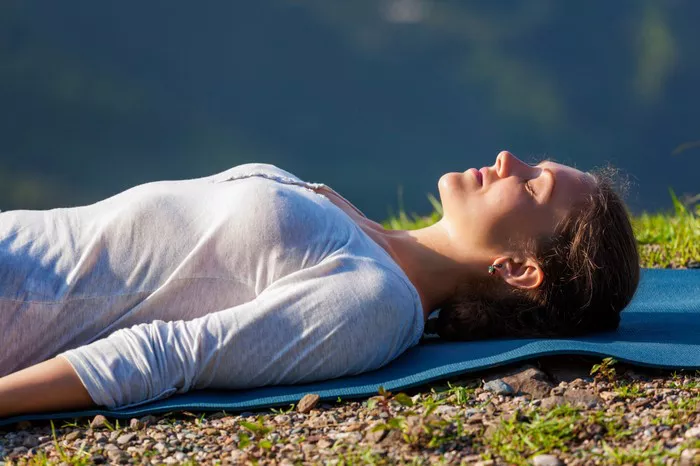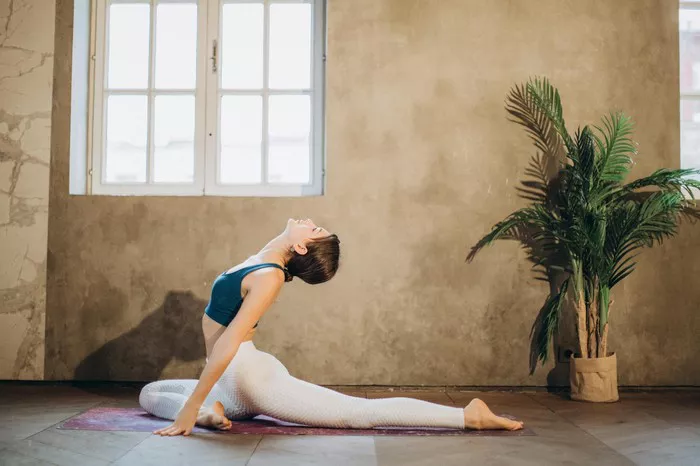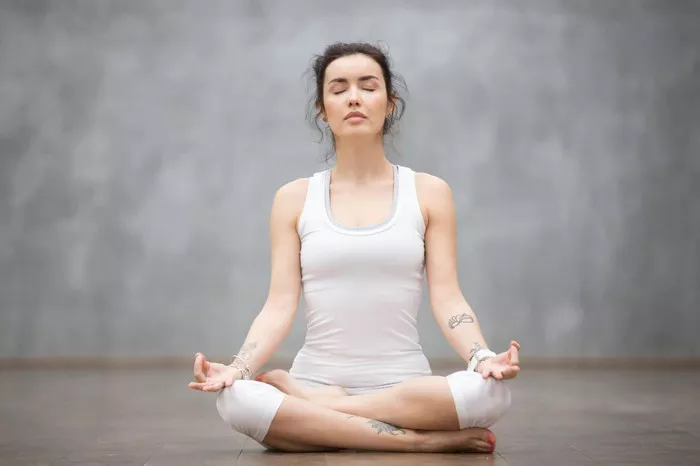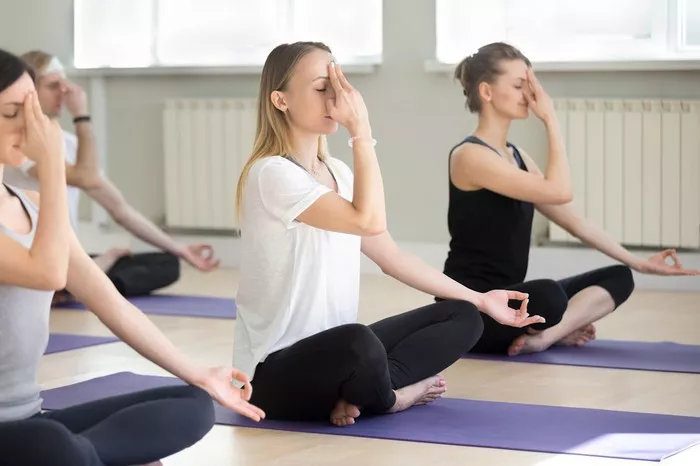In the fast-paced world we live in, finding moments of deep relaxation and tranquility has become essential for maintaining physical, mental, and emotional well-being. One ancient practice that has gained popularity in recent years for its profound relaxation benefits is Nidra Yoga. Also known as Yogic Sleep, this unique form of yoga offers a doorway to a state of conscious relaxation that goes beyond conventional practices. In this article, we will delve into the origins, principles, techniques, and the myriad benefits of Nidra Yoga.
Origins of Nidra Yoga: Unraveling Centuries of Wisdom
Nidra Yoga finds its roots in ancient Indian spiritual and yogic traditions. The term “Nidra” translates to “sleep” in Sanskrit, but in the context of this practice, it refers to a state between wakefulness and sleep. The earliest references to Yogic Sleep can be traced back to ancient texts like the Upanishads and the Tantras, where it was used as a method for deep relaxation and spiritual exploration.
The modern resurgence of Nidra Yoga can be attributed to Swami Satyananda Saraswati, a renowned yogi and spiritual teacher, who adapted and popularized the practice in the mid-20th century. His system, known as Yoga Nidra, is a guided meditation technique that has become synonymous with Nidra Yoga in contemporary times.
Understanding the Principles of Nidra Yoga: Beyond the Physical Asanas
Unlike many traditional forms of yoga that involve physical postures (asanas), Nidra Yoga primarily focuses on the dimension of consciousness. The practice aims to guide practitioners into a state of profound relaxation, where the body and mind can rejuvenate at a deep level.
One of the key principles of Nidra Yoga is the rotation of consciousness. During a typical session, the instructor systematically guides the practitioner’s awareness through different parts of the body, creating a heightened sense of mindfulness. This process allows for a release of physical tension and promotes a state of complete relaxation.
Another fundamental aspect of Nidra Yoga is the development of a Sankalpa, or a positive affirmation. Practitioners are encouraged to set a personal and positive intention at the beginning of each session. This Sankalpa serves as a guiding force for the subconscious mind, aligning it with the practitioner’s deepest desires and aspirations.
The Techniques of Nidra Yoga: A Journey Within
Nidra Yoga is often practiced in a comfortable lying-down position, typically in savasana (corpse pose). The practice can be experienced in various settings, from yoga studios to the comfort of one’s home. The following are some common techniques employed during a Nidra Yoga session:
1. Body Scan: The instructor guides the practitioner’s attention through different parts of the body, bringing awareness and relaxation to each area. This systematic approach helps release physical tension and promotes a sense of ease.
2. Breath Awareness: Conscious control of the breath is a crucial element in Nidra Yoga. Practitioners are guided to observe their breath, promoting relaxation and helping to calm the nervous system.
3. Visualizations: Imagery and visualization play a significant role in Nidra Yoga. Guided visualizations help stimulate the creative and subconscious mind, fostering a deeper connection with the inner self.
4. Rotation of Consciousness: The instructor guides the practitioner’s awareness through various body parts, creating a heightened sense of mindfulness and relaxation. This technique promotes a sense of detachment from external stimuli.
5. Sankalpa: Setting a Sankalpa, or a positive affirmation, is an integral part of Nidra Yoga. Practitioners choose a short, positive statement that reflects their deepest aspirations, and it is repeated silently during the practice to align the subconscious mind with positive intentions.
The Science Behind Nidra Yoga: Unraveling the Benefits
While Nidra Yoga has its roots in ancient spiritual practices, modern science has started to explore and validate its numerous benefits. Research studies have shown that regular practice of Nidra Yoga can positively impact various aspects of physical and mental well-being. Some notable benefits include:
1. Stress Reduction: Nidra Yoga activates the parasympathetic nervous system, promoting the relaxation response and reducing the production of stress hormones. This can be particularly beneficial for individuals dealing with chronic stress and anxiety.
2. Improved Sleep Quality: The deep relaxation induced by Nidra Yoga can contribute to better sleep quality. Regular practitioners often report a more restful and rejuvenating sleep experience.
3. Enhanced Creativity: The visualization techniques used in Nidra Yoga stimulate the creative aspects of the mind. This can lead to enhanced problem-solving skills and increased creativity in various aspects of life.
4. Pain Management: Nidra Yoga has been found to be effective in reducing perceived pain levels. The practice encourages a state of deep relaxation, which can positively influence the perception and management of pain.
5. Emotional Healing: By tapping into the subconscious mind through practices like Sankalpa, Nidra Yoga can aid in emotional healing and promote a positive mindset. It provides a safe space for individuals to explore and release emotional blockages.
6. Enhanced Cognitive Function: The focused awareness and mindfulness cultivated during Nidra Yoga can contribute to improved cognitive function, including better concentration, memory, and mental clarity.
Practical Tips for Nidra Yoga Practice: Creating Your Sanctuary
Embarking on a Nidra Yoga journey requires little more than a quiet space, a comfortable mat or blanket, and the willingness to explore your inner landscape. Here are some practical tips to enhance your Nidra Yoga practice:
1. Create a Comfortable Environment: Choose a quiet and comfortable space where you won’t be disturbed. Dim the lights, use a soft mat or blanket, and make sure the room is at a comfortable temperature.
2. Use Props if Needed: Support your body with props like bolsters or pillows to ensure maximum comfort during the practice. This allows you to fully relax and release any tension.
3. Set an Intention (Sankalpa): Before beginning the practice, take a moment to set a positive intention or Sankalpa. This can be a short, affirmative statement that resonates with your deepest desires.
4. Follow Guided Sessions: Especially for beginners, following guided Nidra Yoga sessions can be helpful. Many instructors offer pre-recorded sessions or apps that provide a structured and supportive experience.
5. Be Patient and Consistent: Like any form of yoga, the benefits of Nidra Yoga may take time to unfold. Be patient with yourself and maintain consistency in your practice to experience the full spectrum of its benefits.
Conclusion
In a world filled with constant stimuli and demands, Nidra Yoga stands as a sanctuary for those seeking deep relaxation, healing, and self-discovery. Beyond its ancient roots, this practice continues to evolve and adapt, resonating with individuals from all walks of life. As science continues to unravel the physiological and psychological benefits of Nidra Yoga, its popularity is likely to grow, offering a pathway to inner peace and well-being for those who embark on this transformative journey. So, lie down, close your eyes, and allow the gentle waves of Yogic Sleep to guide you to a state of profound relaxation and self-discovery.
















